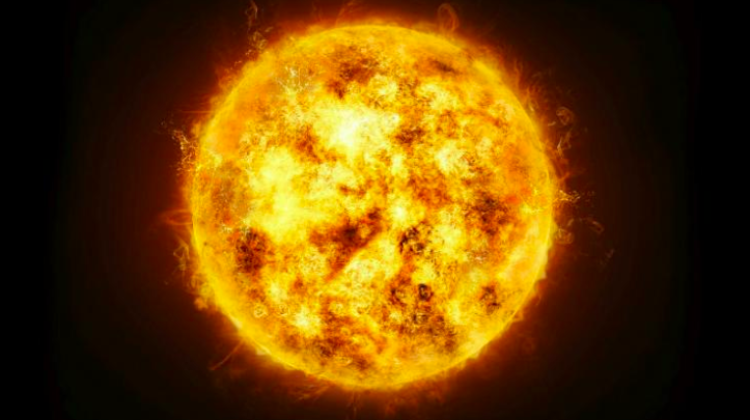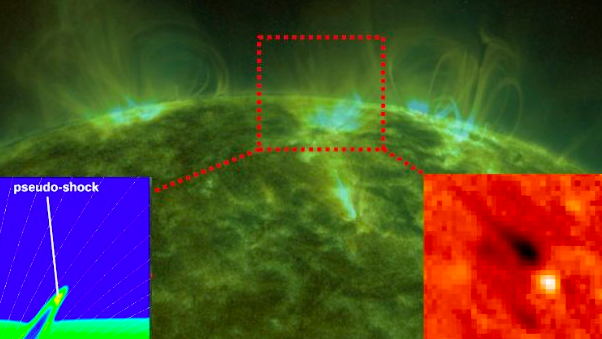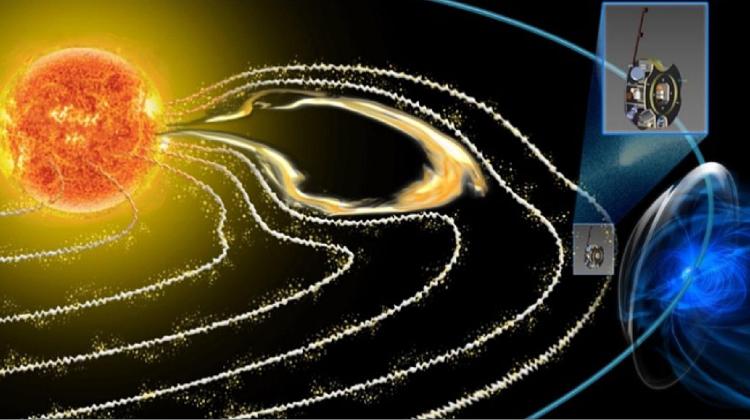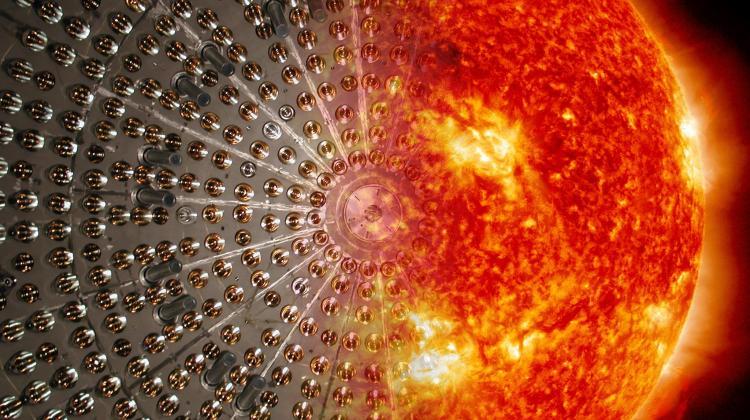Why is the Sun`s corona hotter than the surface? The mystery is unravelling
 Photo: Fotolia
Photo: Fotolia
Why is the temperature in the Sun`s corona a few million degrees higher than on the star`s surface? Research with the participation of Polish scientists shows that this phenomenon is partially caused by a specific type of waves ejecting matter from the star, so-called pseudo-shock waves.
It would seem that the further we are from the heat source, the colder it gets. In the case of our most important heat source, the Sun, it is not so. "The Sun has many puzzles - one of them is temperature" - says Prof. Krzysztof Murawski from the Maria Curie-Skłodowska University in Lublin, who is trying to solve this puzzle.
The surface of the Sun - the photosphere, the part of the star that glows - has the temperature of almost 5.8 thousand Kelvin (about 5.5 thousand degrees C). When we begin to move away from the surface of the Sun, the temperature of the atmosphere actually falls down politely. And at an altitude of 600 km from the Sun it is almost 15 hundred degrees cooler (4300 K). But as we move further away from the surface of the Sun, the temperature begins to rise again and gets extremely high. Temperature in the corona, a few thousand km above the surface, can reach even 2 million K. For several decades, this huge temperature difference between the surface of the Sun and its corona has puzzled scientists.
Astronomers are trying to find out where this heat in the upper atmosphere of the Sun is coming from. A publication in Nature Astronomy partly explains this problem.
In a research project led by Prof. Abhishek Srivastava, scientists showed that the increase of temperatures in the solar corona is linked to a specific type of waves generated in the matter on the surface of the Sun, called pseudo-shock waves. "We showed that pseudo-shock waves have the potential to heat the solar corona" - says Prof. Murawski.
The heliophysicist explains that a pseudo-shock wave is similar to, but not the same as a shockwave. A shockwave is a characteristic disruption that forms, for example, during a supersonic flight, atomic bomb explosion or cracking the whip. According to Prof. Murawski, in a wave of this type, matter discontinuously changes several of its very important parameters: speed, pressure and density.

The Sun`s corona is heated, among others things, thanks to the specific type of waves: pseudo-shock waves. The image shows observational data and the model of pseudo-shock wave formation in the atmosphere of the Sun. Source: IRIS, SDO/AIA
But physicists also know another type of waves, which are very similar to shockwaves, but in their case matter behaves somewhat differently. They are called pseudo-shock waves. "In a pseudo-shock wave, only density changes in a non-continuous way, so you could say it`s a counterfeit shockwave" - says Prof. Murawski. He gives an example that a pseudo-shock wave occurs in a tsunami. And when you direct a small stream of running water onto a plate, you can see a pseudo-shock wave on the edge of the oval formed by water.
Different types of waves can also be observed in the matter from which stars are made. Shockwaves on the Sun have been known for a long time. But pseudo-shock waves have only been discovered there now. "You only need a source of energy that will force the plasma to move at supersonic speeds, and a shockwave will form. And a pseudo-shock wave will follow" - says Prof. Murawski.
For a layman, such a distinction between shock and pseudo-shock waves is not very important. But becomes extremely important when scientists prepare simulations, numerical models of the Sun`s atmosphere. And scientists from the Maria Curie-Skłodowska University have one of the most accurate models for simulating the atmosphere of our star.
This model was prepared by Dariusz Wójcik from the Maria Curie-Skłodowska University as part of his master`s thesis. When the effects associated with occurrence of pseudo-shock in the atmosphere were taken into account in the Polish numerical code, it became apparent where the heat in the upper atmosphere of the Sun was coming from.
But pseudo-shock waves alone are not enough to heat up the corona of a star. Last year, Prof. Murawski`s team helped identify another factor that contributed to the hot solar corona: Alfvén waves. Scientists know that this is not all - there are still holes in the models. "We are already very close to solving the hot corona problem. It seems to me that our next article will solve the mystery completely" - Prof. Murawski smiles mysteriously. He adds that the work on this article is already underway.
PAP - Science in Poland, Ludwika Tomala
lt/ ekr/ kap/
tr. RL
Przed dodaniem komentarza prosimy o zapoznanie z Regulaminem forum serwisu Nauka w Polsce.


















